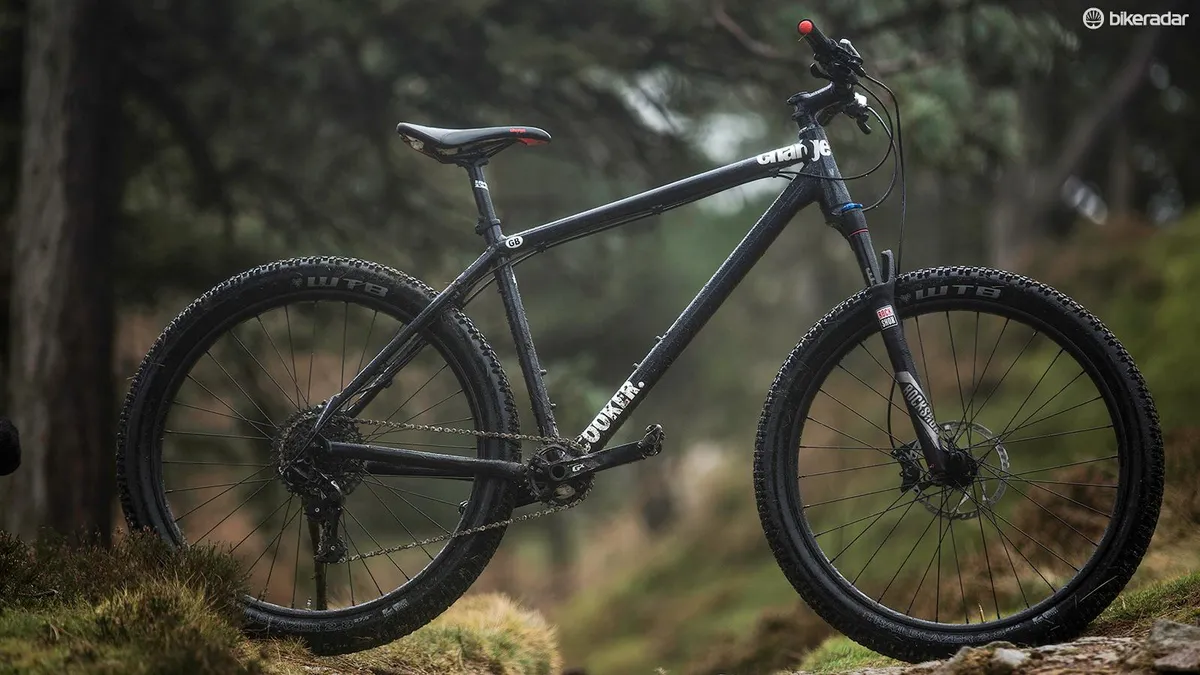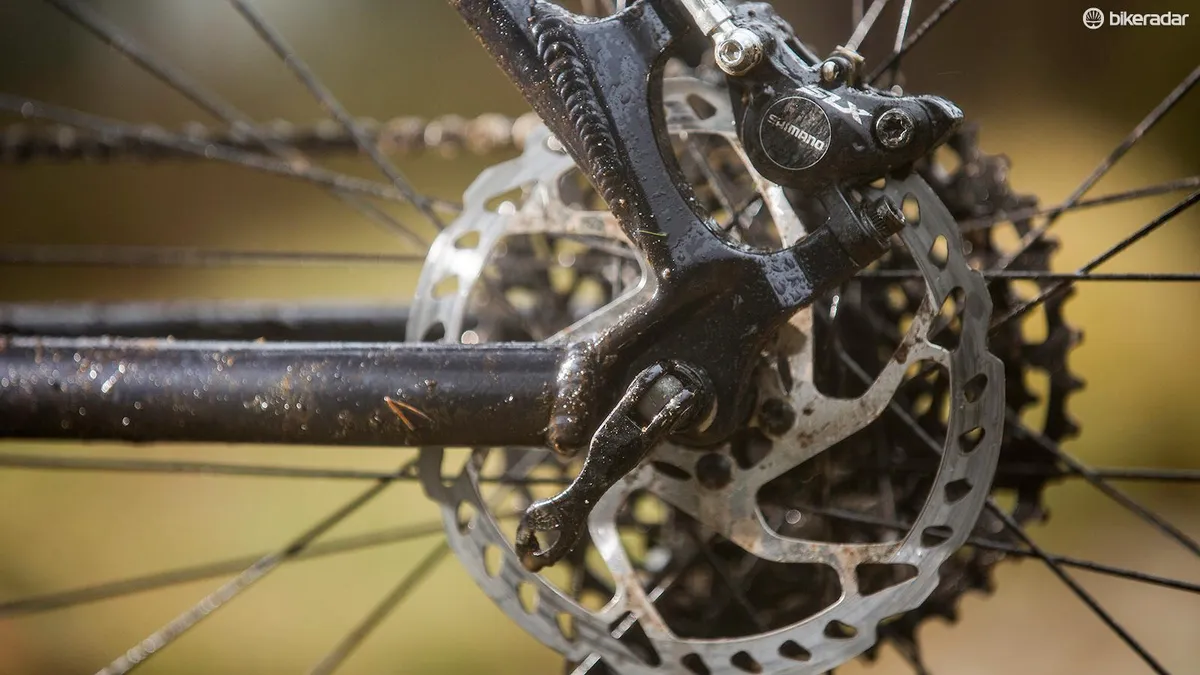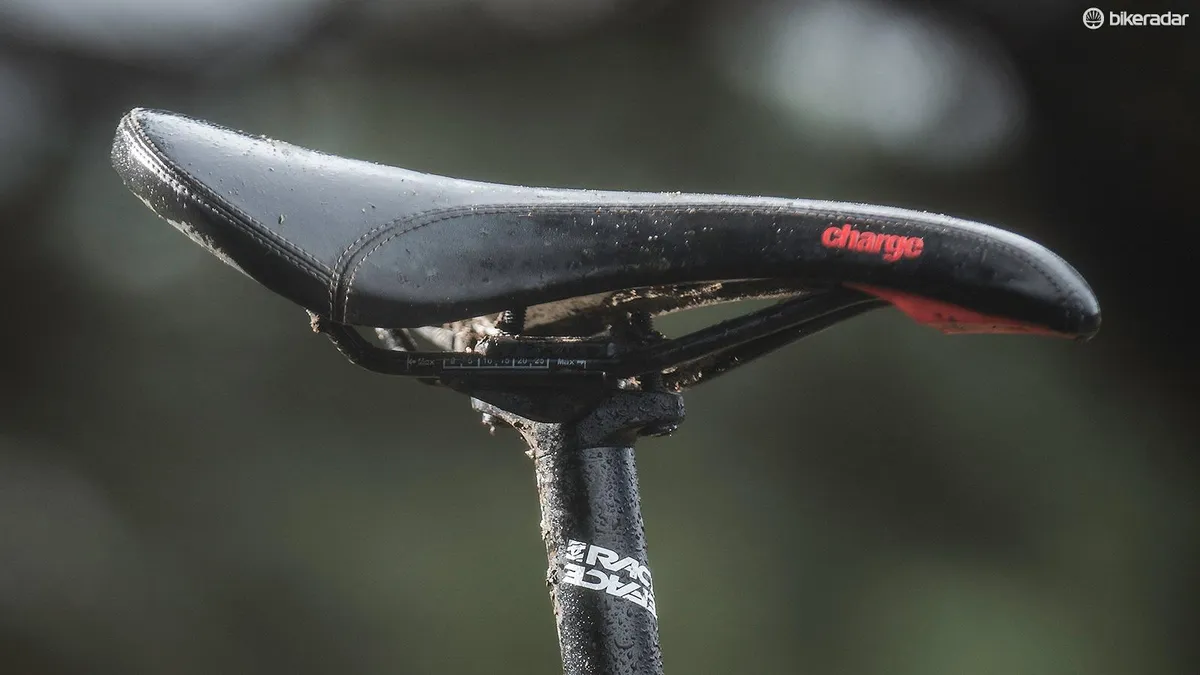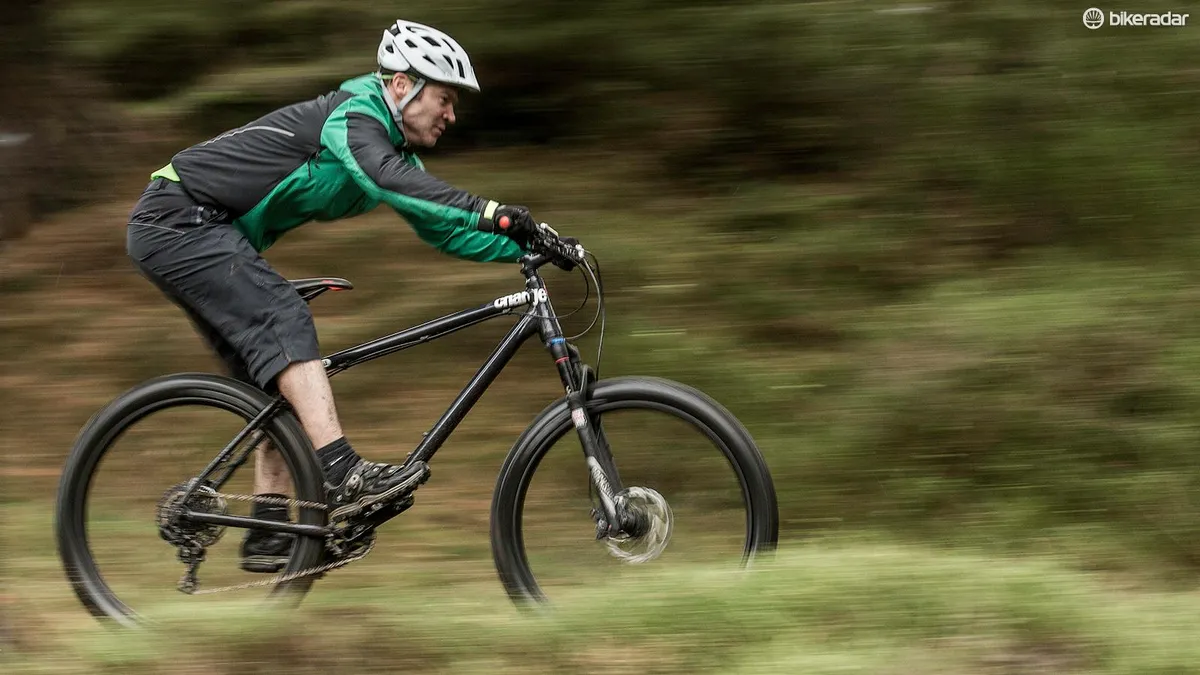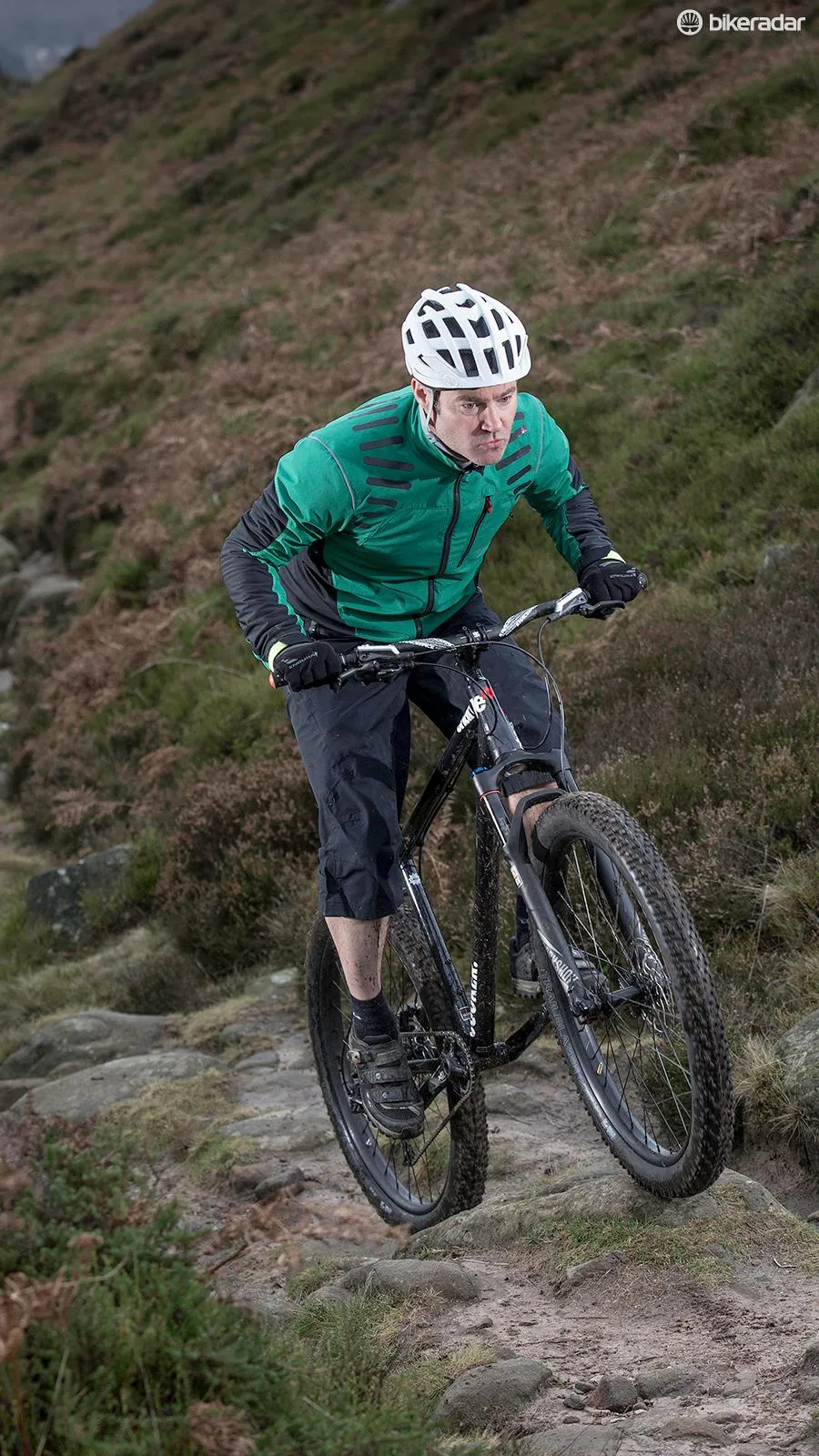Charge’s Cooker serves up a refreshingly different yet traditional ride that minimises some of the downsides of plus-sized rubber without undermining its basic advantages.
Retro aesthetic
The Cooker frame even looks retro, with simple round main tubes behind the tapered head tube and an open-ended throat gusset to assure correct stress transfer. The BB uses threaded external cups, the rear gear cable and brake hose are clipped onto the outside of the frame for easy servicing, and – praise be – there are two bottle cage mounts. Sticking with a 135mm wide, open dropout, quick-release rear axle makes the frame and rear wheel much cheaper, meaning Charge can deliver good value across the Cooker range.
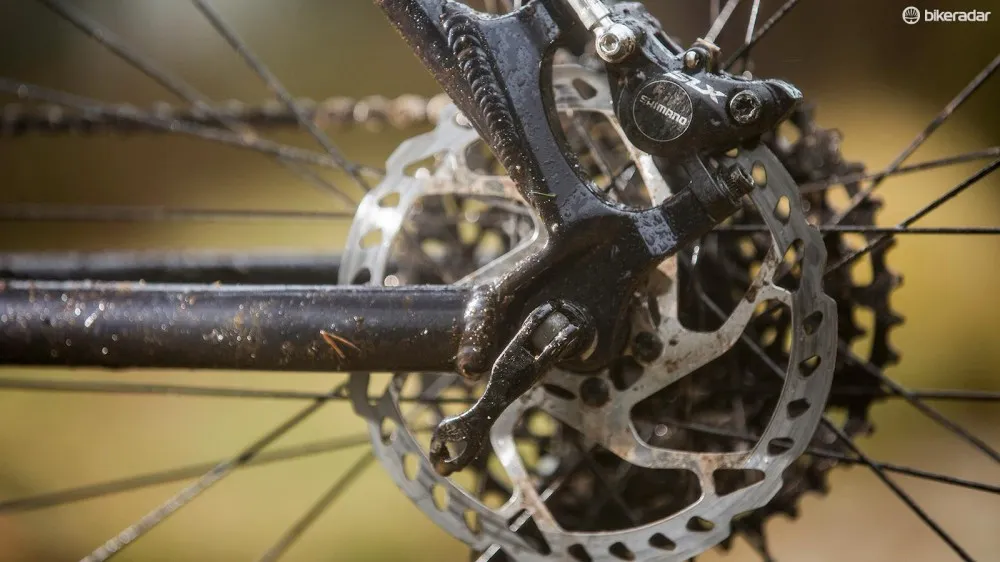
The QR rear hub is fine for the Cooker’s intended use
This bags the Cooker 4 full SRAM GX (albeit with the cheaper solid-armed crankset), plus a RockShox Reba fork with Boost Maxle axle. While the TurnKey damping is relatively primitive, it’s hard to tell through the big WTB tyres.
Keeping the travel to 100mm (3.9in) limits the effect of braking and turning twist on the 32mm legs, but the frame can handle a 120mm (4.7in) fork upgrade if you want a bit more stroke. The bar is narrow and the stem long by fashion standards, but for what Charge has designed the Cooker for – a global recreational trail riding market – they make a lot of sense.
Standing out from the 27.5+ herd
That said, jump aboard the Cooker and it at first feels shockingly different to many of its supposed 27.5+ peers. The bar seems tiny, and something really weird happened as we coasted down the road to our test trails. Rather than feeling like the front wheel was stuck in glue as we tried to twist the combination of slack fork angle and extra-large tread footprint, the Charge actually steered.
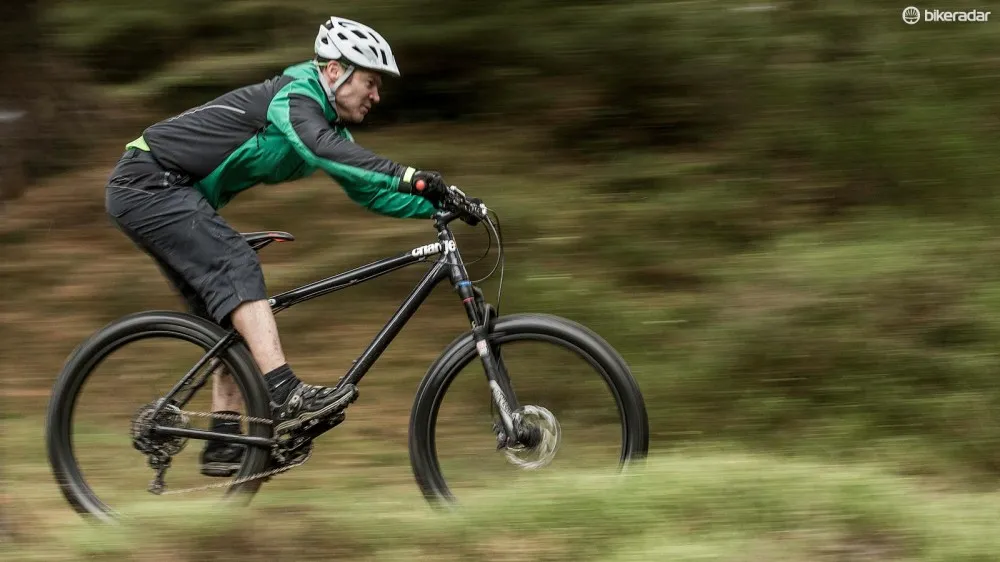
The Cooker is a distinctively different beast to some of its longer, slacker plus-sized peers
It steers fast too, shifting the tyre one way or another freely rather than tramlining along the trail. While it feels nervous and sketchy at first it doesn’t take long to start making sense, particularly on flat or uphill singletrack. Rather than having to Scandi Flick the steering off line to trick the bike into falling the right way into a corner, you can simply steer it the way you want to go.
Add a rounded tyre profile that’s already keen to turn in, and suddenly we were only having to make one, effortless steering move to get round slower speed corners. That was a real contrast to the constant re-adjustments and heaving needed to get the Orbea Loki H-Ltd we were testing at the same time to even follow the trail or dodge obstacles at slow speeds.
Related: Orbea Loki H-Ltd review
At 63mm wide, the WTB tyres are at the narrow end of the plus spectrum, so they’re less likely to scuff rocks and ruts and drag you off line. While there’s less natural self-correction, the quicker steering allows faster traction-saving adjustments and the front end is less likely to flop or wander when climbing or tiptoeing through slow-speed technical sections.
That means that for every time the Charge tucks under, there'll be another when slacker bikes would slid their front tyres wide while the Cooker turns in and holds on.
A good job too, considering the centre-ridge rubber can twist and slip without warning on greasy roots and rocks, making a more heavily-treaded tyre – on the front at least – an essential investment for winter. Even with a grippier tyre, the shorter, steeper geometry makes the Charge fundamentally less stable than its longer, slacker competitors.
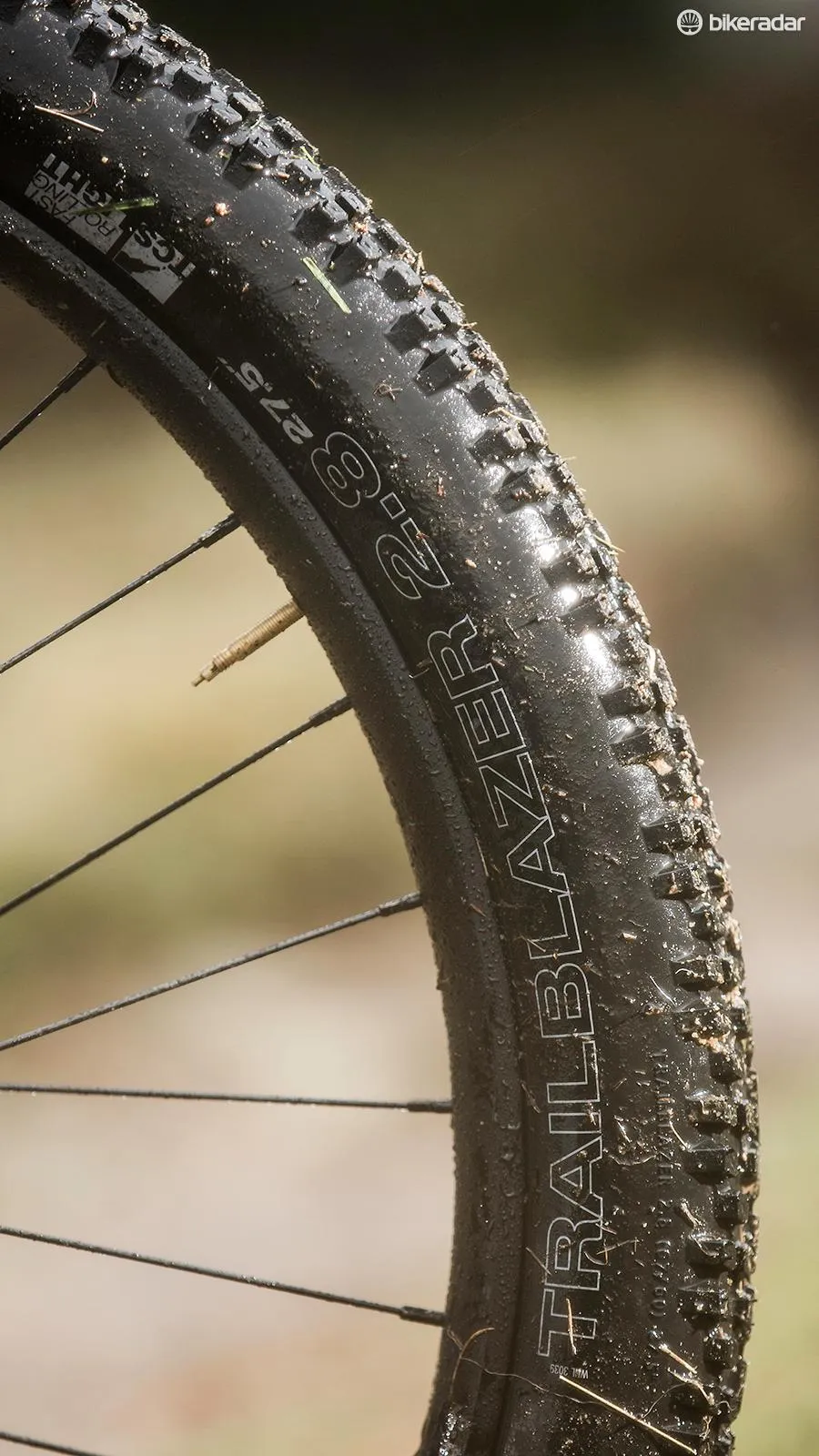
You’ll want more tread up front than WTB’s 2.8in Trailblazer if you ride in the wet
Add the shorter travel and relatively unsophisticated fork and it’s definitely at a disadvantage on swooping trail centre tracks or fast, rough off-piste descents. The bolted seat collar makes the saddle awkward to drop, and the lack of internal routing ports and 27.2mm diameter seat tube severely limit dropper seatpost upgrade options too.
The skinny seatpost adds more compliance under the saddle for smooth long-distance cruising or scampering through local singletrack though, and that’s clearly what the Cooker was designed to do. In these situations the fast-rolling WTB tyres offset the high wheel weight, so it’s not too much of a chore to accelerate and it holds onto speed well once you’ve got it. Despite their relatively small volume, the Trailblazers' supple carcass still gives an obviously smoothed, comfort-enhancing, speed-sustaining ride over stutter bumps compared with conventional rubber.

